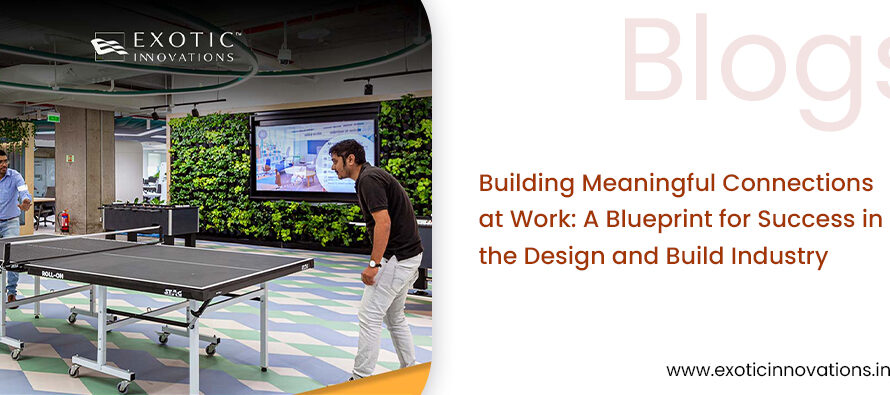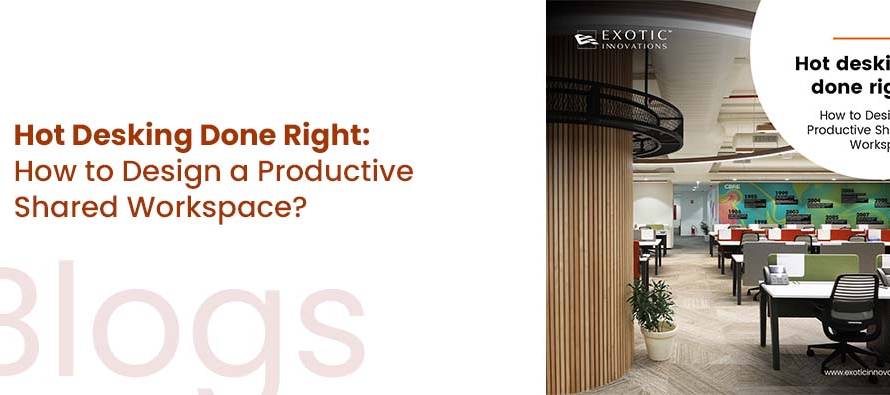Open-plan offices have become the standard for fostering collaboration and enhancing team synergy. While the intent behind these designs is often to encourage communication, creativity, and transparency, they can also lead to distractions that compromise productivity and focus. Designing a distraction-free workspace in an open office requires a balance of thoughtful design, smart technology integration, and a deep understanding of how the environment affects human behavior. For leaders, designers, and architects, achieving this balance is key to crafting spaces that support both individual concentration and team collaboration.
Understanding the Challenges of Open-Plan Offices
Open-plan offices are designed with the idea that collaboration should be free-flowing. The intention is to tear down walls—literally and figuratively—between employees, allowing for spontaneous discussions, quick problem-solving, and the breakdown of hierarchical structures. However, the reality often falls short of expectations. Noise from conversations, the constant flow of people, and visual distractions can create an environment that is far from conducive to focused work. Research consistently shows that noise and lack of privacy are among the most significant stressors in an open office environment, leading to decreased focus and productivity.
Acoustic Solutions: Managing Noise for Better Focus
One of the most effective ways to create a distraction-free workspace in an open-plan office is by managing sound. Acoustic design elements are essential for improving sound quality and reducing noise pollution. Simple yet effective solutions include acoustic panels, ceiling baffles, and floor coverings, which absorb sound and minimize reverberation. Moreover, incorporating soundproof booths or phone pods within the office can give employees the option of escaping the noise when they need to concentrate or have private conversations.
Another crucial element in noise control is the strategic use of “quiet zones” or designated areas for deep work. These zones, which can be enhanced with acoustic partitioning and soft furnishings, create a peaceful retreat for employees who need to work without distractions. The key here is to maintain the integrity of the open-plan layout while giving individuals the flexibility to switch between collaborative and focused workspaces based on their tasks.
Flexible Workstations: Designing for Adaptability
Flexibility in workspace design is a cornerstone of modern office layouts. Employees should have the ability to adapt their environments to suit different tasks, whether they are engaging in a team brainstorm, working independently, or engaging in deep concentration. Adjustable desks and movable partitions allow employees to tailor their workstations to their needs, fostering an atmosphere where focus is not compromised by rigid office structures.
Open-plan offices can also benefit from zones that cater to specific work types, such as quiet areas for individual tasks and open spaces for group collaboration. By creating these differentiated environments, employees can choose the right space based on their needs, enhancing their ability to focus when necessary without sacrificing collaboration when it counts.
Strategic Layouts: Enhancing Flow without Disruption
The layout of an office can greatly influence the level of distraction employees experience. While it is important to maintain the open feel of the space, careful placement of high-traffic areas—such as kitchens, meeting rooms, and printer stations—can minimize disruptions. These communal zones should be placed away from the desks of employees who need to concentrate, reducing the chances of unplanned interruptions.
Additionally, positioning collaborative areas away from individual workspaces ensures that conversations and group discussions don’t spill over into areas where people are engaged in deep, solitary work. Providing employees with the ability to easily transition between different types of spaces is essential for ensuring that focus is maintained.
Designing for Visual Peace: Minimizing Distractions
While sound is often the primary concern in open-plan offices, visual distractions can also undermine focus. The open design may inadvertently expose employees to a constant stream of visuals—people walking by, screens displaying irrelevant information, or distractions from nearby colleagues. To counteract this, incorporating design elements such as privacy screens, plants, and partitions can help block unnecessary visual stimuli without sacrificing the openness of the office.
A minimalist approach to office decor, where clutter is reduced, can also play a crucial role in reducing distractions. Clean lines, neutral color palettes, and the strategic use of natural light can help create a visually calm environment that promotes concentration. In contrast, a visually chaotic workspace can cause stress, leading to reduced attention span and productivity.
Incorporating Technology: Tools to Support Focus
Technology is another critical factor in creating a distraction-free workspace. Noise-canceling headphones, task lighting, and software that helps employees block distractions (such as website blockers during work hours) can enhance focus. By providing these tools as part of the office design, companies demonstrate a commitment to supporting the well-being of their employees. Additionally, integrating smart office systems—such as automatic lighting control based on activity and customizable temperature settings—can further improve the comfort and focus of employees.
Promoting Work-Life Balance through Thoughtful Design
At the heart of creating distraction-free open-plan offices is the need to respect the boundaries between work and personal time. A well-designed office acknowledges the importance of allowing employees to manage their workload and mental health. By incorporating quiet areas, flexible layouts, and a variety of workspaces that support both focus and collaboration, companies can foster a healthy balance that promotes creativity without sacrificing concentration.
A Holistic Approach to Focus and Collaboration
Designing for focus in open-plan offices doesn’t mean sacrificing collaboration. With the right design strategies—such as acoustic control, flexible workstations, thoughtful layouts, and technology integration—companies can create environments that support both focused work and spontaneous collaboration. By striking this balance, businesses will not only improve productivity but also cultivate a workplace that values both individual well-being and collective innovation.
As the demands of modern work evolve, interior designers and architects will continue to shape environments that foster not only creativity but also the kind of deep, focused work that drives success. Through thoughtful design, an open-plan office can truly become a space where both focus and collaboration coexist harmoniously.
Liked our blog? Share your opinion in the comments below!



